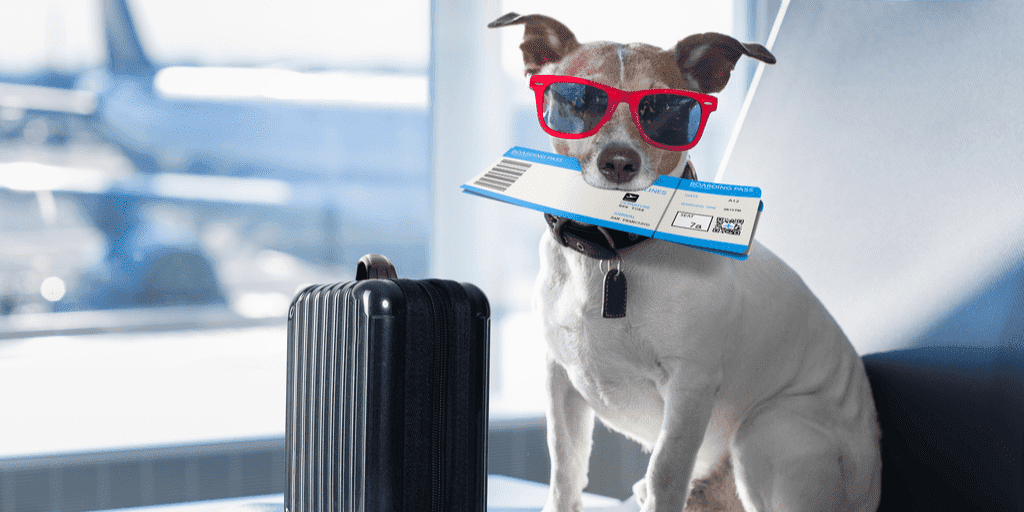
If you’re faced with flying with a pet, chances are you feel scared. Arranging your pet’s reservation and getting all the required documents can be nerve-wracking. And then there are the concerns for your pet’s safety during the flight. Perhaps you’ve even considered driving to your destination instead. But if time is a factor, or you’re relocating to another part of the world, flying may be your only option.
If that’s the case, keep in mind that millions of animals fly each year in the United States alone. We hear about the tragedies and mishaps in the media, but the vast majority of pets in cargo arrive safely. Part of safe flying with a pet starts with you. Be sure to research the airline and talk to staff before and during your flight to help calm your fears. And, by following the tips below, you will feel more prepared for your flight so you can both fly with a bit less stress.
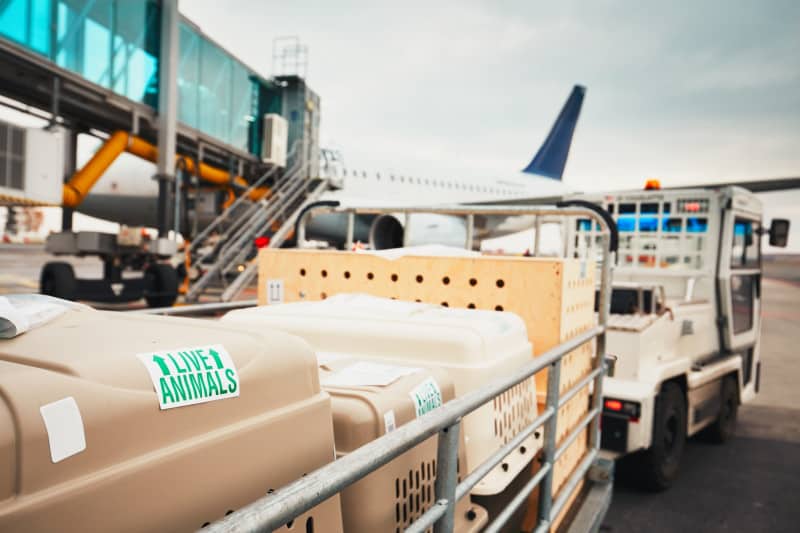
Tips for Flying With A Pet Safely
1. Talk to Your Vet
The first step when flying with a pet is to schedule an appointment with your veterinarian. You want to ensure that your pet is in good health to fly. If you get the go-ahead from your vet to travel, make a second appointment close to your date of departure. Then check with the airline and state veterinarian at your destination to determine what documentation you’ll need. It’s not unusual for airlines to require a health certificate issued within 10 days of your flight.
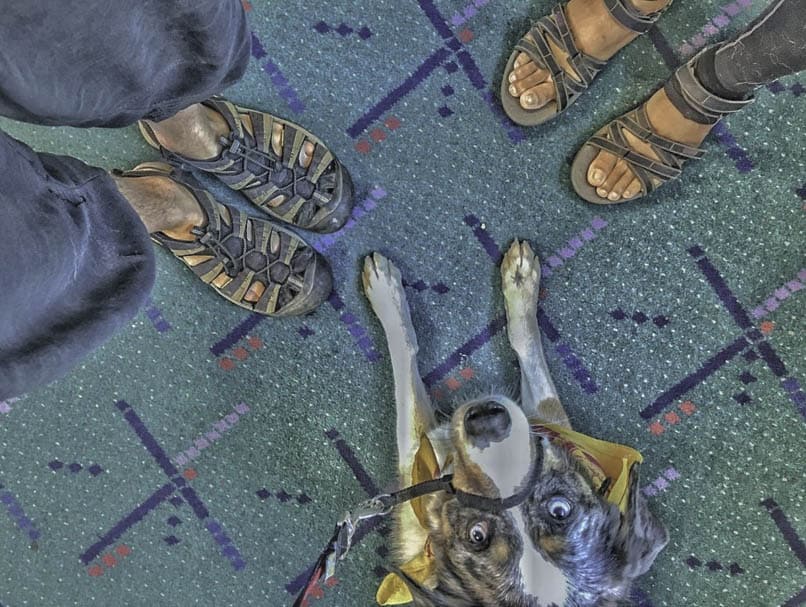
2. Make Sure Your Pet’s Breed Isn’t Restricted
More than ever, airlines are putting restrictions on dog and cat breeds, namely Brachycephalic or “short-nosed” breed like Boston terriers, boxers, and bull dogs, among several others. Some airlines will allow you to fly with your short-nosed pet in cabin, provided they fit within the size and weight guidelines, but always check with your airline before hand.
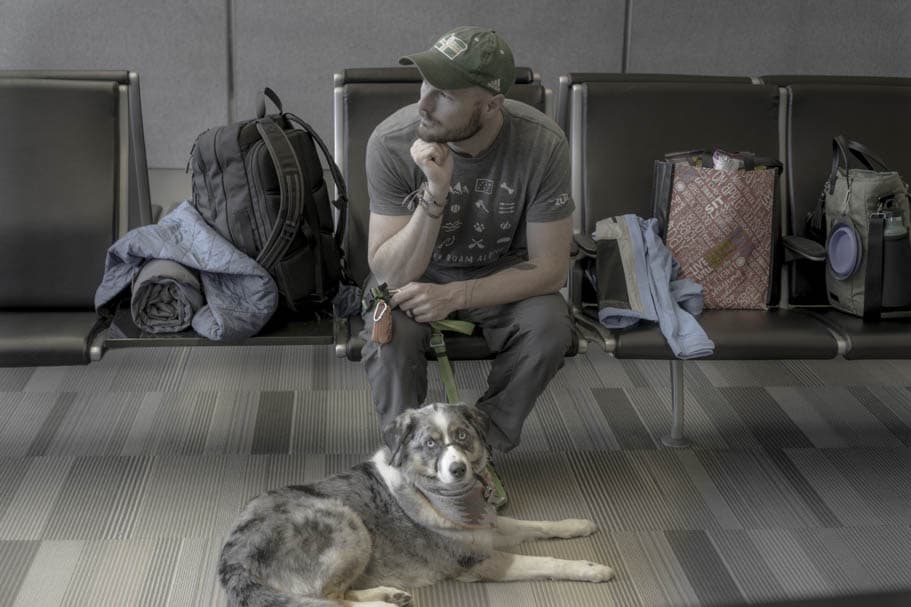
3. Book in Advance
Airlines allow a limited number of pets per flight, so book early to ensure you get your desired flight. Especially when you fly with your pet in cargo or internationally, be sure to make your reservations well in advance because the requirements can take months to prepare.
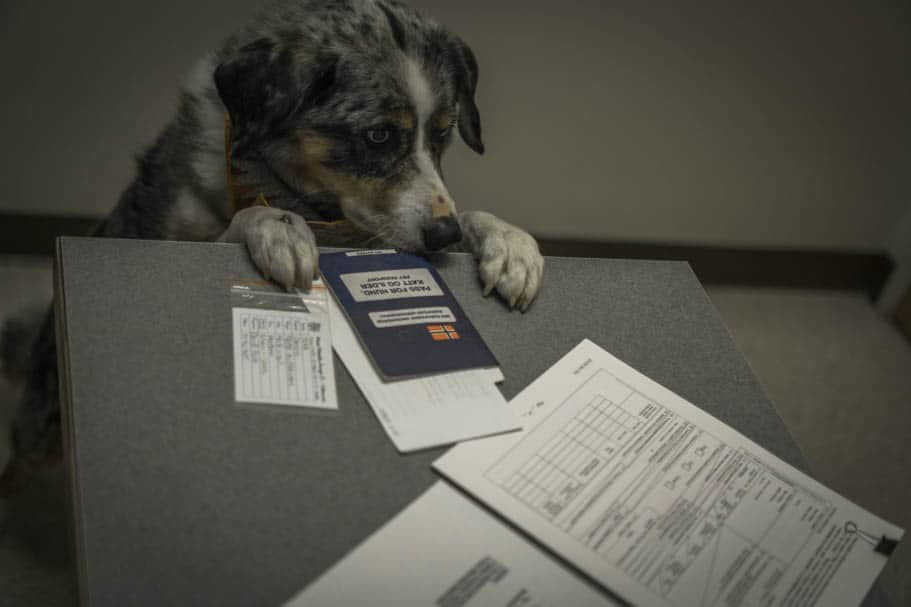
4. Acclimate Your Pet to the Kennel
Purchase your kennel well in advance and start getting your pet used to being in the space. Similar to crate training, your goal is for your pet to think of the kennel as a den – a safe, comfortable place they like hanging out.
To help your pet develop a positive association with the kennel, feed her in it for several weeks leading up to your flight. Put her bed and a few favorite toys inside to show her that it is her space to play, sleep, and retreat.
For the flight, line the kennel with a dog travel bed and top it with with puppy pads, just in case of an accident during the flight.
5. Don’t Give Your Pet a Sedative
Tranquilizers are not recommended for pets during flight as they can interfere with a dog’s ability to control body heat at high altitude. If you’re concerned you pet may be anxious, consider CBD oil or treats (be sure to check regulations about flying with CBD oil), calming drops, or a vest designed to calm you pet.
6. Ask to Board Early
Flying with a pet may make you eligible for early boarding – just ask. Getting yourself and your pet situated before your flight can take some time, and having a few extra minutes can help you both remain calm.
7. Keep Your Pet’s Health Documents Handy
Each airline sets their own requirements for pets flying in the cabin and in cargo. Determine which documents your airline requires and keep them handy, so when you’re asked by various staff members, you can easily provide them.
8. Seek out the Pet Relief Areas Before You Fly
Most airports are now required to offer pet relief areas. Before your flight, map out the closest one to your terminal for efficient pet potty breaks during layovers. To help located pet relief areas, Alaska Airlines put together this comprehensive list in airports they service, or ask the staff at the airline gate.
Keep in mind that your pet may not want to go, since the locations are often indoors and on astroturf. Have a puppy pad handy in case your pet decides to eliminate somewhere outside of the pet relief area.
9. Bring a Chew Toy for Take Off and Landing
Like humans, pressure will build up in your pet’s ears during take off and landing. You may notice your pet batting at her ears or shaking her head frequently. Give her a chew toy or hard, chewy treats to help them relieve any discomfort.
Follow these tips, and you and your pet can have a safe, comfortable flight.

